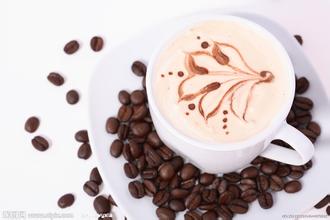The characteristics of Mexican coffee with large particles and strong sweetness
Quality beans: aldumara mexico. Taste characteristics: large particles, with strong sweet, sour and good aroma. Best BBQ: medium fried or body fried. It is characterized by smooth taste, high acidity, medium alcohol, slightly nutty aftertaste. Sweet, sour, bitter taste neutral, moderate sour, taste special, elegant. Although Brazilian coffee is of little professional value, it is extremely suitable for blending. Because coffee production is huge, the price is not very expensive.
The characteristics of Mexican coffee
Mexicans are enthusiastic and optimistic, and the chocolate in Mexican coffee perfectly reflects this. Mexican coffee has different recipes, but the main difference is whether it contains alcohol or not. We will first introduce the non-alcoholic recipe. Heat a cup of milk, a teaspoon of cinnamon powder and a teaspoon of vanilla powder in a saucepan over medium heat. Keep the heat low. Make sure the milk doesn't boil. Then add cocoa powder, dissolve well and stir well. If you love chocolate, you can use chocolate paste instead of cocoa powder and milk mix. Allow the milk to cool for about 5 minutes before pouring into the coffee. Garnish the coffee with cold cream and a cinnamon stick. Chocolate and cinnamon aromas blend together to give off a desert flavor. Tasting a cup of coffee like this, you feel like you're walking through the greyish green cacti of the Mexican desert. It's a fun experience. Mexico's most famous alcoholic drink is tequila, which Mexicans drink with a lick of salt on their tongue and then swallow in a small glass. Tequila is a strong drink, and Mexican coffee made with this drink is very good. If you have enough courage, you may wish to try it. Tequila Mexican coffee and non-alcoholic Mexican coffee practice basic frame, but first pour a small glass of tequila in the bottom of the glass, then pour milk and coffee, preferably garnished with cream and cinnamon

Important Notice :
前街咖啡 FrontStreet Coffee has moved to new addredd:
FrontStreet Coffee Address: 315,Donghua East Road,GuangZhou
Tel:020 38364473
- Prev

Introduction of Cuban coffee beans with humid climate, abundant Rain Water and fertile land
In Cuba, most of the coffee beans are picked by hand. Coffee beans are picked about every half a month during the ripening period. During or after picking, coffee beans are classified and those immature and bad beans are removed to ensure the quality of the coffee. Cubans usually deal with coffee beans in two ways: sun exposure and water washing. Sunbathing is the easiest,
- Next

Introduction to sour Dominican coffee grown in the highlands
In the early 18th century, coffee was introduced to Domiga from Martinique, and fine coffee was produced in the north represented by Hibao and in the south, including Okayabani Santo Domingo. Among them, the coffee produced by Santo Domingo and Barney, which is almost synonymous with domiga coffee, is a world-famous high-quality coffee. Santo Domingo coffee, which is characterized by freshness and elegance,
Related
- Does Rose Summer choose Blue, Green or Red? Detailed explanation of Rose Summer Coffee plots and Classification in Panamanian Jade Manor
- What is the difference between the origin, producing area, processing plant, cooperative and manor of coffee beans?
- How fine does the espresso powder fit? how to grind the espresso?
- Sca coffee roasting degree color card coffee roasting degree 8 roasting color values what do you mean?
- The practice of lattes: how to make lattes at home
- Introduction to Indonesian Fine Coffee beans-- Java Coffee producing area of Indonesian Arabica Coffee
- How much will the flavor of light and medium roasted rose summer be expressed? What baking level is rose summer suitable for?
- Introduction to the characteristics of washing, sun-drying or wet-planing coffee commonly used in Mantenin, Indonesia
- Price characteristics of Arabica Coffee Bean Starbucks introduction to Manning Coffee Bean Taste producing area Variety Manor
- What is the authentic Yega flavor? What are the flavor characteristics of the really excellent Yejasuffi coffee beans?

